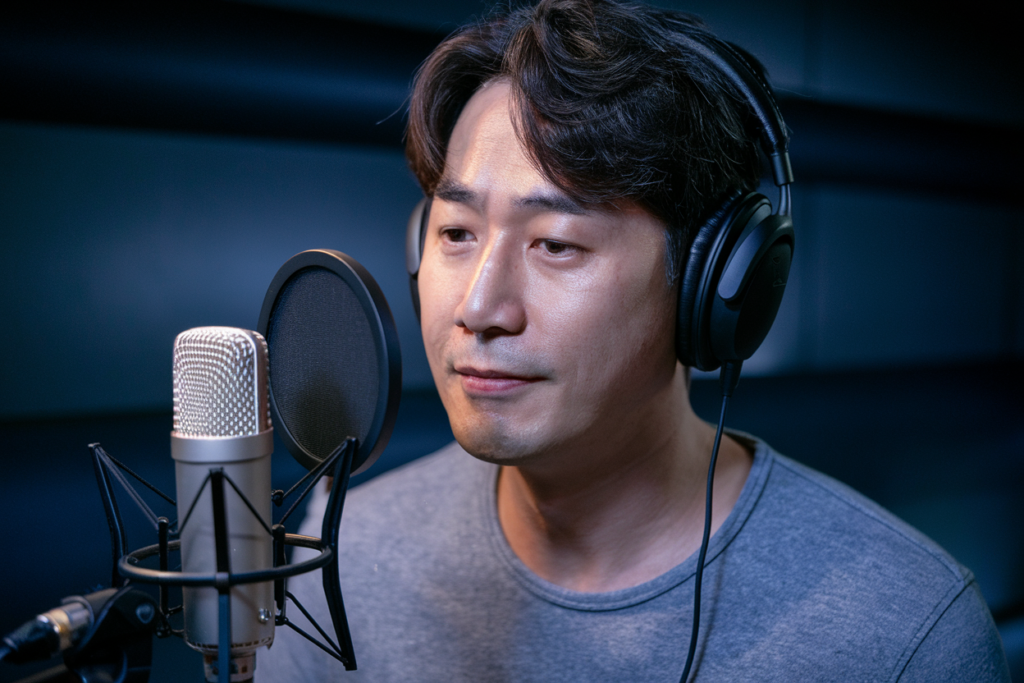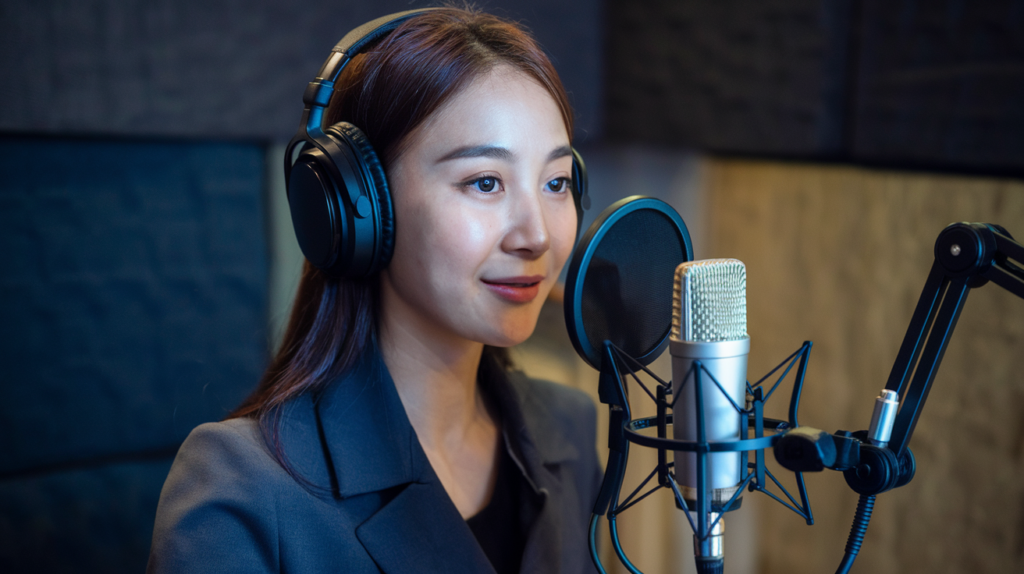Key Takeaways
- High-Quality Dubbing is Essential: Effective dubbing enhances viewer engagement by conveying original emotions and cultural nuances, making it a crucial aspect of Korean video content.
- Invest in Professional Voice Talent: Skilled voice artists are vital for capturing character essence and delivering authentic performances that resonate with audiences.
- Choose the Right Equipment: Utilize quality microphones and audio interfaces to ensure clear sound capture. Proper tools lay the groundwork for exceptional dubbing results.
- Master Voice Acting Techniques: Focus on vocal modulation, timing, and synchronization to create compelling performances that align seamlessly with visual elements.
- Prioritize Editing and Mixing: Use advanced software for precise editing and effective audio mixing to maintain clarity, balance sound levels, and enhance emotional depth in your final product.
Ever wondered how to make your Korean video dubbing stand out? With the rise of K-dramas and Korean content worldwide, high-quality dubbing is more crucial than ever. You want your audience to feel every emotion and nuance, right?
Importance Of High Quality Korean Video Dubbing
High-quality dubbing in Korean video content plays a crucial role in connecting with audiences. When done effectively, it enhances viewer engagement and ensures the original emotions resonate well across language barriers. This process involves skilled voice artists who understand the nuances of both languages and cultures.
Dubbing that captures the essence of characters can transform a good production into a memorable experience. You want voice talents who not only match the tone but also convey subtle expressions through their performances. A strong voice actor can breathe life into animated characters or bring intensity to dramatic scenes, making them feel authentic and relatable.
Additionally, consider how high-quality dubbing affects your brand’s reputation. Poorly executed voiceovers can lead to misunderstandings or even disengagement from your audience. Investing in top-notch voice over talent guarantees professionalism and credibility for your project.
In today’s global market, you face competition from diverse media sources. Ensure your content stands out by prioritizing quality in every aspect, including dubbing. The difference between mediocre and exceptional work often lies in the details—like choosing an experienced voice over artist who understands cultural context.
Ultimately, investing time and resources into high-quality Korean video dubbing pays off significantly by creating a lasting impact on viewers while enhancing storytelling capabilities across various platforms.
Equipment For High Quality Dubbing
Investing in the right equipment is crucial for achieving high-quality dubbing in Korean video content. The clarity of your voiceovers depends significantly on the tools you choose. Here’s what to focus on:
Microphones
Choose a microphone that captures every nuance of your voice. Dynamic microphones are excellent for studio settings, providing a rich and clear sound. Condenser microphones work well for capturing subtle details, making them ideal for emotional scenes. Consider options like cardioid or shotgun mics, as they reduce background noise and enhance vocal clarity. A pop filter can further refine your recordings by minimizing plosive sounds.
Audio Interfaces
An audio interface connects your microphone to your computer, ensuring high-quality sound transfer. Look for interfaces with low latency and good preamps to enhance recording quality. USB interfaces are user-friendly and often sufficient for most projects, while XLR interfaces offer advanced capabilities for professional setups. Ensure the audio interface supports multiple inputs if you plan on recording more than one voice talent simultaneously.
Selecting the right equipment sets the foundation for exceptional dubbing experiences that resonate with viewers and effectively convey emotions across languages.
Techniques For Effective Dubbing
Effective dubbing requires a blend of technical expertise and artistic talent. Focusing on these techniques can elevate your Korean video content significantly.
Voice Acting Skills
Voice acting skills stand at the core of exceptional dubbing. A skilled voice artist must embody the character’s essence, capturing emotions and nuances that resonate with viewers. Training in vocal modulation, character interpretation, and emotional delivery enhances your ability to connect with the audience. Practicing different styles can help you adapt to various genres, whether it’s drama or comedy. Remember, every intonation and inflection matters—these details breathe life into characters and convey their stories authentically.
Timing And Synchronization
Timing and synchronization play crucial roles in successful dubbing projects. Matching dialogue delivery with on-screen actions ensures a seamless viewing experience. Pay attention to lip movements; aligning your voiceover precisely with what’s happening visually creates a more immersive atmosphere for viewers. Use editing software to assist in timing adjustments if necessary—this aids in honing your craft further. Always remember that perfect synchronization helps maintain the original emotion while making it accessible across languages, enhancing engagement without losing context or depth.
Editing And Post-Production
Editing and post-production play a pivotal role in achieving high-quality Korean video dubbing. This stage ensures that the final product resonates with viewers while maintaining the original emotional depth.
Software Options
Selecting the right software can streamline your dubbing process significantly. Consider using audio editing tools like Adobe Audition, Audacity, or Pro Tools. These programs offer robust features for voiceover artists, enabling precise editing of dialogue tracks and sound effects. Look for options that support multi-track recording to manage various voice talents efficiently. Additionally, ensure compatibility with video formats, as this simplifies synchronization between audio and visuals.
Audio Mixing Tips
Effective audio mixing elevates your dubbed content by creating a balanced soundscape. Start by adjusting levels to ensure clarity; dialogues from voice actors should stand out without overpowering background music or sound effects. Use equalization (EQ) to enhance vocal presence—cut unnecessary low frequencies while boosting mid-range tones where human voices thrive.
Consider applying compression on voiceovers to maintain consistent volume levels across different scenes, ensuring no line is lost in quiet moments or overwhelmed during intense sequences. Lastly, don’t overlook reverb; adding subtle room ambiance can give depth to recordings without making them feel detached from the visual elements.
By honing your editing and mixing skills with these techniques, you contribute significantly to producing captivating Korean video content that connects deeply with audiences worldwide.
Conclusion
Investing in high-quality Korean video dubbing can transform your content and elevate viewer engagement. By focusing on the emotional depth of characters and ensuring precise synchronization, you create a more immersive experience. Remember that the right equipment and skilled voice actors are crucial to achieving this level of quality.
Utilizing effective editing techniques will further enhance your final product, allowing it to resonate with audiences across different languages. With attention to detail and a commitment to excellence, you’ll stand out in a competitive landscape. Prioritize these elements, and watch your storytelling capabilities soar while leaving a lasting impact on viewers worldwide.
Frequently Asked Questions
What is the importance of high-quality dubbing in Korean video content?
High-quality dubbing is crucial for effectively conveying emotions and nuances in Korean video content, especially as K-dramas gain global popularity. It engages viewers by ensuring that characters’ feelings resonate across language barriers, enhancing overall storytelling.
How does dubbing impact audience engagement?
Dubbing that captures the original emotions helps connect with audiences on a deeper level. When done well, it transforms viewing experiences and keeps viewers engaged, while poorly executed dubbing can lead to misunderstandings and disengagement.
What skills are essential for effective voice acting in dubbing?
Effective voice acting requires skills in vocal modulation, character interpretation, and emotional delivery. Voice artists must embody characters authentically while ensuring timing and synchronization align with on-screen actions to maintain the original essence.
Why invest in quality equipment for dubbing?
Investing in quality equipment like microphones and audio interfaces ensures clear sound transfer and low latency during recording sessions. Good preamps also contribute to achieving high-quality audio essential for effective dubbing.
What software is recommended for editing dubbed audio?
Recommended software options for editing dubbed audio include Adobe Audition, Audacity, and Pro Tools. These tools facilitate multi-track recording, efficient mixing, and seamless synchronization with video formats to enhance overall sound quality.
How can post-production improve the quality of dubbed content?
Post-production techniques such as audio mixing create a balanced soundscape by adjusting levels for clarity and applying equalization. This enhances vocal presence while maintaining emotional depth crucial for resonating with viewers.
What role do cultural understanding play in dubbing?
Cultural understanding is vital in dubbing as it enables voice artists to capture nuances specific to both languages. This connection helps ensure that original meanings are preserved while making content relatable to diverse audiences globally.







